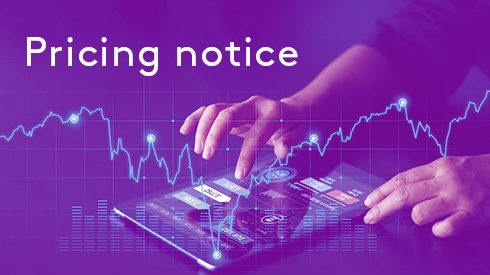“These regions are… just making steel the cheapest, and perhaps the dirtiest way possible, and then dumping excess production in open markets like the United States,” Dempsey told Fastmarkets’ Americas steel editor Dan Hilliard in a fireside chat on Wednesday.
To combat the cheaper and “dirtier” steel coming from abroad, progress on sustainability has to be paired with aggressive and effective trade policy to ensure that the industry’s investments are not undercut by foreign material coming into the domestic market.
The steel industry in the US is at the forefront when it comes to the lowest emissions among the major steel-producing countries, demonstrating that the industry sees that as good business, Dempsey said.
Developing a domestic carbon tariff
Exploring the potential of the US developing a trade policy linked to carbon emissions, Dempsey highlighted the need for a trade policy tool that considers the differential in carbon emissions intensity between domestic production and imports.
“There should be a tariff assessed to [the higher emission intensity abroad] to level the playing field and to create an incentive for other countries to do what we’re already doing, which is invest in cleaner steel production,” Dempsey said.
A form of carbon tariff in the US is unlikely to look like the EU’s Carbon Border Adjustment Mechanism (CBAM), Demsey said, and the US is likely to take a more market-based approach than a tax-focused approach.
Looking ahead, Dempsey told conference attendees that there will be an increase in the utilization of direct-reduced iron to reduce iron ore and, in the longer term, that companies will start pursuing the use of hydrogen as a reductant to reduce carbon emissions.
The incoming Donald Trump administration will likely focus on trade enforcement and the use of tariffs as a critical economic policy tool, although the specifics of the trade policies are still unknown, Dempsey said.
Trump implemented Section 232 in 2018, imposing a 25% tariff on steel imports. In his presidential campaign in 2024, Trump was vocal about imposing tariffs on imports coming from Mexico and Canada.
USMCA needs further work, data transparency vital
The US-Mexico-Canada Agreement (USMCA), which is up for review in 2026, needs further work, Dempsey said, highlighting the need to clamp down with circumvention and evasion of trade laws.
“We do have folks in Mexico, in certain industries that are importing a lot of product from China, from Russia, and then further processing it, calling it Mexican, to bring it into it into the United States,” Dempsey said.
The Joe Biden administration imposed in July a “melt and pour” requirement for imports of steel from Mexico that were made elsewhere, in a bid to curb trans-shipment and excess production.
One of the hurdles deterring the flow of Chinese and other foreign steel through Mexico is a lack of data transparency, Dempsey told conference attendees.
“The first thing you need is better data and transparency so that the industry and governments can work together to address the problem. We’re going to need a better, stronger, more cooperative relationship with both Mexico and Canada,” the CEO said.
You can understand the critical forces impacting steel news and steel price movements with our reliable data-driven insights, market-reflective prices, forecasts and analysis. Discover steel news, forecasts and 1,500 prices in one space with Fastmarkets.





